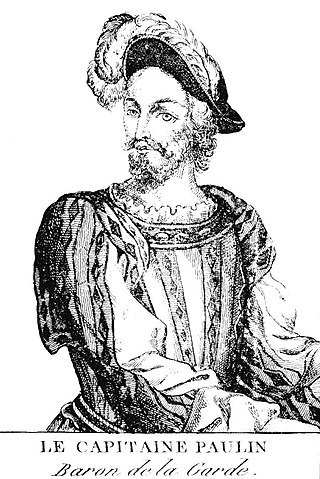
Mehmed II, commonly known as Mehmed the Conqueror, was an Ottoman sultan who ruled from August 1444 to September 1446, and then later from February 1451 to May 1481.

The Republic of Venice or Venetian Republic was a sovereign state and maritime republic in parts of present-day Italy that existed for 1100 years from AD 697 until AD 1797. Centered on the lagoon communities of the prosperous city of Venice, it incorporated numerous overseas possessions in modern Croatia, Slovenia, Montenegro, Greece, Albania and Cyprus. The republic grew into a trading power during the Middle Ages and strengthened this position during the Renaissance. Citizens spoke the Venetian language.

A dragoman was an interpreter, translator, and official guide between Turkish-, Arabic-, and Persian-speaking countries and polities of the Middle East and European embassies, consulates, vice-consulates and trading posts. A dragoman had to have a knowledge of Arabic, Persian, Turkish, and European languages.

The Aydinids or Aydinid dynasty, also known as the Principality of Aydin and Beylik of Aydin, was one of the Anatolian beyliks and famous for its seaborne raiding.

The Republic of Venice was a sovereign state and maritime republic in Northeast Italy, which existed for a millennium between the 8th century and 1797.

The Habsburg Empire of Charles V and its allies conquered Tunis in 1535, wresting the city away from the control of the Ottoman Empire.

The First Ottoman–Venetian War was fought between the Republic of Venice with its allies and the Ottoman Empire from 1463 to 1479. Fought shortly after the capture of Constantinople and the remnants of the Byzantine Empire by the Ottomans, it resulted in the loss of several Venetian holdings in Albania and Greece, most importantly the island of Negroponte (Euboea), which had been a Venetian protectorate for centuries. The war also saw the rapid expansion of the Ottoman navy, which became able to challenge the Venetians and the Knights Hospitaller for supremacy in the Aegean Sea. In the closing years of the war, however, the Republic managed to recoup its losses by the de facto acquisition of the Crusader Kingdom of Cyprus.

The Franco-Ottoman Alliance, also known as the Franco-Turkish Alliance, was an alliance established in 1536 between the King of France Francis I and the Sultan of the Ottoman Empire Suleiman I. The strategic and sometimes tactical alliance was one of the longest-lasting and most important foreign alliances of France, and was particularly influential during the Italian Wars. The Franco-Ottoman military alliance reached its peak around 1553 during the reign Henry II of France.

Antoine Escalin des Aimars, also known as Captain Polin or Captain Paulin, later Baron de La Garde, was French ambassador to the Ottoman Empire from 1541 to 1547, and "Général des Galères" from 1544.

Antonio Rincon, also Antoine de Rincon, was a Spanish-born diplomat in the service of France. An influential envoy from the King of France to Sultan Suleiman I of the Ottoman Empire, he made various missions to Constantinople between 1530 and 1541. While an effective diplomat, Rincon's enemies considered him a renegade and some later observers would criticize him for promoting Machiavellian policies.

An Ottoman embassy to France was sent in 1533 by Hayreddin Barbarossa, the Ottoman Governor of Algiers, vassal of the Ottoman Emperor Suleiman the Magnificent.

The siege of Corfu in 1537 was led by the Ottoman Emperor Suleiman the Magnificent, against the Republic of Venice-held island of Corfu. It is part of the Ottoman–Venetian War (1537–1540), one of the numerous Ottoman–Venetian Wars of the period.

The Third Ottoman Venetian War (1537–1540) was one of the Ottoman–Venetian wars which took place during the 16th century. The war arose out of the Franco-Ottoman alliance between Francis I of France and Süleyman I of the Ottoman Empire against the Holy Roman Emperor Charles V. The initial plan between the two had been to jointly invade Italy, Francis through Lombardy in the North and Süleyman through Apulia to the South. However, the proposed invasion failed to take place.

The following outline is provided as an overview of and topical guide to the Ottoman Empire:

Mesih Pasha or Misac Pasha was an Ottoman of Eastern Roman origin, being a nephew of the last Roman emperor, Constantine XI Palaiologos. He served as Kapudan Pasha of the Ottoman Navy and was Grand Vizier of the Ottoman Empire in 1501.
Bailo or baylo is a Venetian title that derives from the Latin term baiulus, meaning "porter, bearer". In English, it may be translated bailiff, or otherwise rendered as bailey, baili, bailie, bailli or baillie. The office of a bailo is a bailaggio. The term was transliterated into Greek as μπαΐουλος (baioulos), but Nicephorus Gregoras translated it ἐπίτροπος or ἔφορος.

The Dragoman of the Sublime Porte, Dragoman of the Imperial Council, or simply Grand or Chief Dragoman, was the senior interpreter of the Ottoman government and de facto deputy foreign minister. From the position's inception in 1661 until the outbreak of the Greek Revolution in 1821, the office was occupied by Phanariotes, and was one of the main pillars of Phanariote power in the Ottoman Empire.

Antonio Crutta was a diplomat and politician in the Polish court for around 30 years in the reign of Stanisław August Poniatowski. For his services, to the Polish state he was ennobled in 1792.

Theodore Palaiologos was a 15th- and 16th-century Greek stratiote and diplomat in the service of the Republic of Venice and one of the key early formative figures of the Greek community in Venice. He was not related to the Palaiologos dynasty of the Byzantine Empire, but his family may have been their distant cousins.

Safavid–Venetian relations were the relations between Safavid Iran and the Republic of Venice.



















